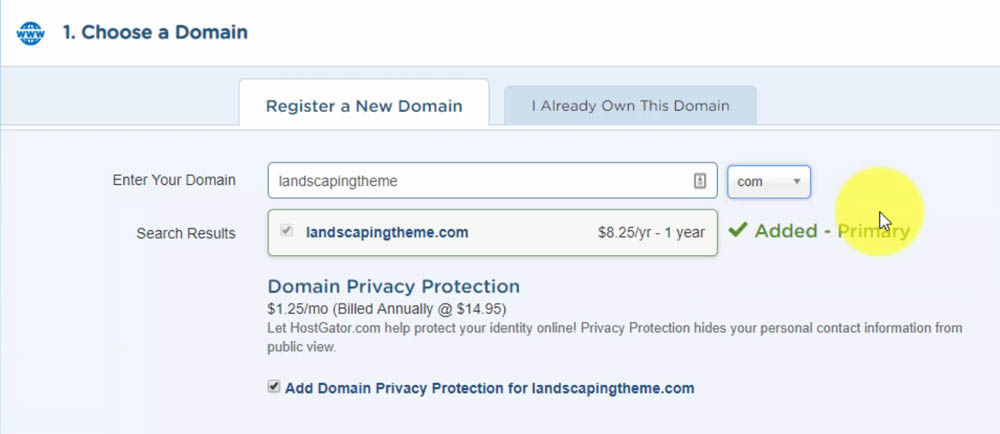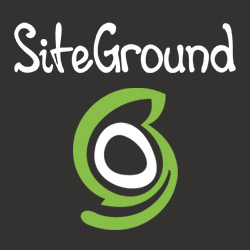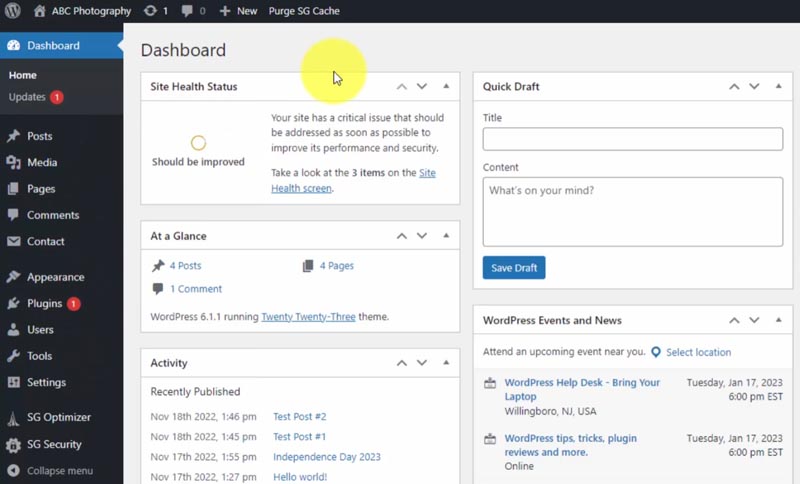Today, we’ll talk about the client handoff process when delivering a WordPress website.
Sometimes, folks tend to overcomplicate this step, striving for the perfect process. However, in dealing with others, listening to your client’s unique situation and meeting them halfway often proves most effective.
So, let’s explore the major sticking points to launching a client website.
15 Tools to Start Your Web Design Business
Want this helpful free giveaway or training?
Who Buys Domain & Hosting?

Firstly, there’s the question of the website infrastructure nuts and bolts, i.e., who purchases the domain and web hosting?
There’s no one-size-fits-all approach.
I’ve encountered almost all the scenarios, from clients having both and just needing to launch WordPress on a hosting package they’ve already bought, to clients who start from scratch.
Personally, I prefer doing everything under my accounts for ease of management. However, if clients already have their domain and hosting sorted, there’s no need to change that, especially if they are past the refund period!
Simply obtain their account login details and work with what they have.
The added benefit is that you’ll learn how various domain providers and web hosting companies operate and find the one you like the most.
Many web developers choose to start a website locally, creating directly on a PC. While this approach is convenient for you (done with software like XAMPP to run PHP and MySQL on your computer), it poses a challenge when clients want to preview the site.
Sending them a link to see your work isn’t feasible if the site is only locally hosted!
To address this, I purchased a domain solely for demo websites. You can ensure this domain isn’t indexed by Google by editing the robots.txt file.
Then, I install each unique WordPress site within a subfolder, so it looks like…
yourdemodomain.com/my-clientThis makes it easy for clients to review and provide feedback.
Nowadays, many hosting companies offer a more convenient solution through a “staging area,” which is usually installed as a temporary subdomain on your real domain name.
I’ve covered client pricing more extensively in another blog post. Most commonly, to launch a website, you charge 50% upfront payment and the remaining 50% upon launch, once the site is approved and ready to go.
When I receive the final payment, that’s when I transfer the site to their live domain.
This is where migration plugins come in handy. My personal favorite is Duplicator, which turns the complicated process into easy-to-follow on-screen instructions.
My overarching philosophy is to make things as easy as possible for clients, handling these technical tasks so they don’t need to worry about them.
For hosting, you simply need to choose an option that allows for unlimited websites, and the limiting factor is either your space, bandwidth or resources used across all sites.
Initially, I started with a reseller plan from HostGator, upgraded to a VPS for a few years, and now run most client websites on a SiteGround GrowBig plan.
For domains, I started with GoDaddy and still use them to this day, since I’ve had very few issues with them. Their hosting is another story, and I like having domains and hosting on separate platforms.

SiteGround Web Hosting
Launch your website or blog today on SiteGround, the hosting company recommended by WordPress!
Buy NowI may earn a commission if you purchase using my links which helps support this website.
Who Owns the Website?

Ownership of the website itself is a more tricky matter.
Many web designers simply hand over complete ownership to the client. They are in the business of charging a high ticket price for the setup and letting the client handle everything post-launch on their own domain/hosting.
While this approach is valid, I’ve found that it can lead to challenges, especially if clients lack the expertise to manage the site effectively.
Even when you provide training or tutorials for them to DIY, clients struggle to grasp the intricacies of WordPress. It’s common for them to initially express enthusiasm for handling updates and edits themselves, only to find themselves overwhelmed once they actually dive in.
Simply put, most clients aren’t equipped to manage the website independently using WordPress. They are busy with their own problems, and adding another frustrating technical experience to their plate is their worst nightmare.
If a client is a website novice and wants to DIY, they are better off using a more constrained platform like Squarespace instead of hiring a web designer.
That’s why I’ve shifted away from one-time projects and offer ongoing management services for a monthly fee.
This way, clients can simply contact me via text or email (whatever is most convenient) with their requested website updates. Then, I take care of them on my schedule.
When it comes to domains, I’ve encountered issues with larger national website providers that unfairly lock customers into a bad deal.
For instance, they will register the domain, and if the client decides to cancel, they will withhold domain access instead of transferring ownership.
This is detrimental from an SEO standpoint, as maintaining ownership and building authority on your primary business domain over a long period is crucial for success with Google.
My approach here is simple — be reasonable and cooperative with clients!
If they choose to cancel or request ownership of the domain name or website when it’s under my control, I do my best to accommodate them.
In such cases, what I would do is create a complete website backup with Duplicator and hand it over. For the domain, they’d have to create an account with GoDaddy or another domain provider, and I would initiate a transfer.
They get everything, yet it’s not my responsibility to set it up on a new hosting account — that’s on them to figure out or whoever they hire next.
If the website is already set up on their domain and hosting, it’s on them to deal with those companies. If you’re using a premium theme like Divi, you can simply remove your API key from the settings before making a backup, so they won’t receive future updates.
Basically, all of the little problems that might occur in the future are now their issue, not yours.

Divi Visual Builder
The #1 WordPress theme on the entire internet to design your website with drag-and-drop!
Buy NowI may earn a commission if you purchase using my links which helps support this website.
Should Clients Get Admin Access?

As I mentioned briefly, if a client requests admin access, I’m more than willing to provide it, as long as they understand the responsibility and ramifications of the power this brings!
You can create a separate WordPress account for them. If they just want to update content, limit the account role to author or editor vs. full administrator privileges.
If they want 1-on-1 training, incorporate that into your pricing structure. You cannot do this for free.
In my early days, I made this mistake, and funny enough, that’s why I started creating YouTube tutorials. Despite investing time in creating tutorials for my first handful of clients, only one regularly published themselves.
I thought to myself, there’s a broader audience of web designers who are interested in learning WordPress, so why not share these same tutorials on YouTube?
Many freelancers hesitate to offer full management services or charge a monthly fee.
However, I’ve found it to be beneficial for both myself and my clients. It allows for increased margin and revenue for you, reducing the constant need for new clients. And it enables you to provide more focused attention to each individual client.
It’s also a great way to test new ideas and do things that the bigger companies can’t with their cookie-cutter solutions.
Provide Post-Launch Value to Earn More

Maintaining ongoing value post-launch is crucial for website success. Continuously adding to and optimizing the site is key, as is monitoring traffic and performance.
To achieve this, you must track analytics reports, which show goal completions such as contact form inquiries or phone number clicks. This data will more clearly illustrate the value that a website is bringing your client, and is an easy way to justify what they pay you monthly!
You can send this info to your clients either through a concise one-page PDF or via screencasts, where you can record yourself navigating through important graphs within your analytics reports and providing them a brief explanation.
Consistently, clients have expressed appreciation for these reports (especially the screencasts), finding value in understanding their website’s traffic and conversion rates.
This approach has undoubtedly fostered long-term client relationships, with several clients remaining with me for over a decade. Building such rapport means you don’t need to work with dozens of clients to generate a sustainable side income or turn this into a full-time operation.
Beyond website management, I offer additional services such as social media, SEO, and online advertising.
The internet landscape evolves rapidly, and I can safely say that the average business owner doesn’t have the capacity to keep up with changes across all these platforms – WordPress, Google, Facebook, Instagram, etc.
Part of what they are paying for is you to stay abreast of these developments and come up with ways to utilize the right combination of marketing channels to get them the best results.
The flipside is that I’ve had clients who are happy with a professional website and do fine with referral work. They often go 6-12 months without reaching out to me. In this situation, when they actually do have a request, I’ll go out of my way to take care of it.
Other clients are much more proactive, and appreciate regular communication, whether it’s via phone calls or face-to-face meetings. This fosters trust and ensures a long-lasting partnership, but you also have to balance it because some of them will happily talk your ear off for 2 hours every week if they could. 😆
Check Existing Email Accounts

One last thing, but certainly not least, is handling email accounts tied to the client’s domain.
You can omit this completely if you’re building from scratch on a new domain. However, if your client has an existing domain name with custom email, you must do an audit to determine their current setup before transferring anything.
That’s because when you change domain DNS settings, it will also affect how email is handled.
In cases where clients don’t have existing domain-hosted email accounts, I prefer setting up email forwarders rather than creating new email accounts.
This approach allows clients to retain their custom domain email addresses, ensuring professionalism in communication. But the web server doesn’t store email, and you don’t have to worry about monitoring these inboxes, which will eat into your web hosting quota(s).
Forwarders are also easier since they require no setup. The email goes directly to your client’s existing address, and they handle it from their preferred inbox, whether it’s Gmail, Yahoo, iCloud, or another popular provider.
Most of my clients, particularly in the home service contractor niche, prefer this streamlined approach, as they primarily rely on email and phone calls to generate leads and close deals offline.
Remember, you’ll never fully grasp the intricacies of this client website handoff process until you engage with others and encounter the challenges unique to their business industry.
Don’t hesitate to seek out clients, even if you don’t have all the answers right away.
Learn by doing and develop your own business processes from this real-life freelancing experience!
15 Tools to Start Your Web Design Business
Want this helpful free giveaway or training?


